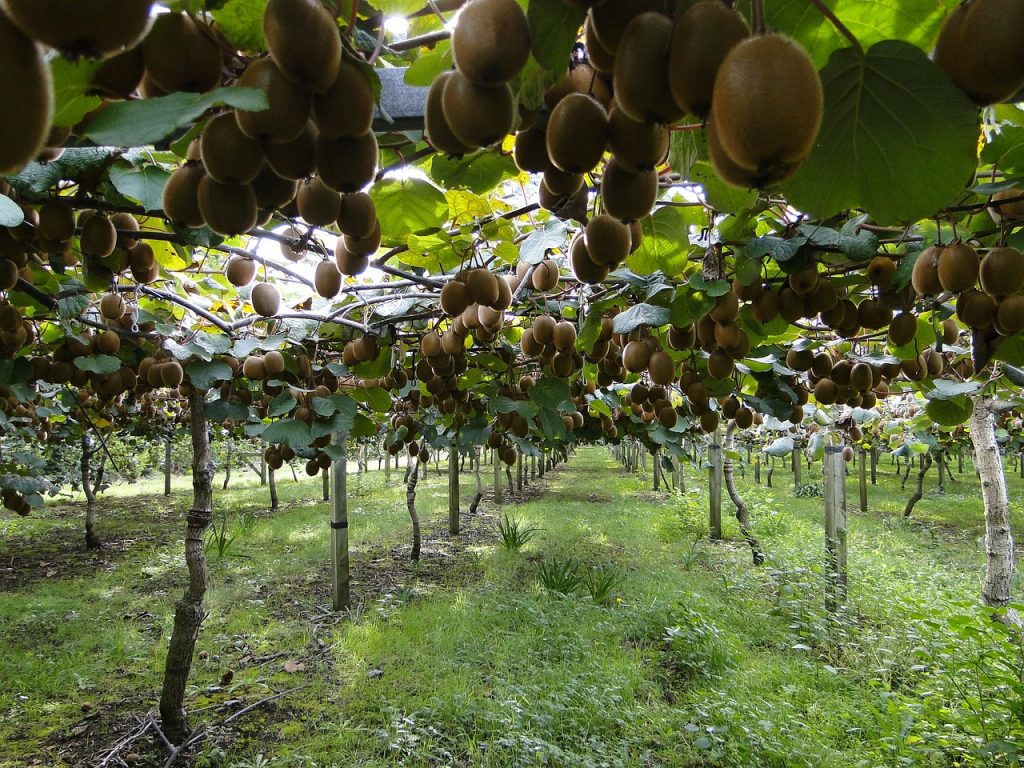How to Grow Kiwi Plants - Complete Guide

As we have already learned in other posts, the Kiwi originated in southern China, but today we have already managed to grow kiwi plants in many parts of the world.
The fruit grows through vines during the summer season, when it matures and achieves its characteristic brown color.
Over time, and due to the popularization of this fruit, the vineyards began to use vegetative propagation strategies, which we will talk about later, but as an initial summary, they basically consist of making cuts, to increase the traits of the plant. mother, or seed propagation.
This is surely one of the simplest and most popular steps. We must cut cuttings from the kiwi plant, at the end of winter. Another alternative would be to do it during the summer, when the kiwi plant grows daily.
Cut the Cutting
We must select cuts of approximately between 10 to 15 centimeters long. Important! That the cutting has leaves, but NO fruit buds.
The cut should be as straight as possible with our trusted pruning shears.
Scrape a portion
We scrape a portion about 2-3 centimeters long. We do it in the bark of the base of the kiwi plant, to be able to expose the interior after cutting. We can use any knife to do the scraping, or the same pruning shears already mentioned.
We immerse the lower half of the cuts made, in a rooting hormone, with 0.2% IBA in Summer, and 0.5% IBA in Winter.

We plant the cuts made in pots, between 15 to 20 centimeters. We fill the container with 50% perlite, and 50% substrate. Finally we add a quarter cup of cold water, but around the base of each cut. We must press halfway in the zone of the hormone. We must keep the pot in an environment of 20 to 25 degrees Celsius, and exposed to natural, but indirect light. Another alternative would be to place the pot under a fluorescent lamp for 6-7 hours a day.
We spray the cuts and the surface with the rooting whenever it is dry. The goal is to maintain a gentle moisture around the base of the cut made.
We check for roots after 50-60 days, 70 at most. To find out, we gently pull the cuts to see if the roots are well tied to the substrate.
We transplant the cuts using 1 nursery container. We fill it with 3 parts of the soil from our garden, and 1 part of substrate. The plants must be kept in the pot until the end of their growth stage, but with this step we will have the permanent bed ready.
We must obtain and remove the seeds of the ripe kiwi at the end of summer. We crush the fruit with our hands in a container filled with clean water. The seeds will gradually float to the surface. We take the small black seeds and let them dry for 24-48 hours.
We keep the selected seeds in damp perlite during the winter. We must keep them in an environment of 5 degrees Celsius at all times.
We take the seeds from where we have kept them in spring. We must plant them in medium-sized plastic pots, filled with soil or substrate. Approximately 5-6 seeds per pot, in a depth of 0.2-0.3 millimeters.
Important! The floor should never be soaked. We must maintain a normal humidity level at all times. To do this, we water the seeds using a soft diffuser.
First germination
We should observe the first germination from the second week. We sprinkle sand around the seedlings as they emerge to maintain moisture.
Once the kiwi seedling has a couple of sets of leaves, we take them out and transplant them into individual pots of the same size as the initial pot where we plant the 5-6 seeds. We fill them with 3 parts of soil, and 1 of substrate.
We maintain and take care of the seedlings until they are large enough to be transplanted into a larger garden, starting at 15 centimeters in height.
Where does the Kiwi grow? Where we CANNOT plant Kiwi
First of all, please don't try to grow kiwi on balconies or terraces. Bad idea! It will dry much faster, it will not get the necessary temperature, and above all, it will be affected by the external climate or the rains. In practically no case, the kiwi never develops and grows in that place.
The first step is to remember that the Kiwi is a "tropical" plant, as it needs high humidity throughout the year. How can we achieve such a condition? Easy and simple, urban gardens.
Does the location affect the kiwi plantation? Where is it sown?
Does the location affect the Kiwi plantation? Where is kiwi grown? It really is not a very crazy question, because being a delicate plant, we cannot grow it in very exotic places.
This kind of thing reminds me of when I was a child, and I would plant chickpeas in cotton and watch them grow and grow every day. I wish I had known that he could do it with Kiwi too! Be careful, not in cotton, of course. I mean plant it.
Create the conditions for the Kiwi plantation
Okay, perfect, now that we have the location for the kiwi plantation, the next step is to give it the necessary conditions for it to grow, and we will achieve that with a structure. The typical monofilament covers, typical of greenhouses to be able to create the right microclimate, and that it can vegetate correctly
If you don't know how to create some, here are some links to get the necessary monofilament fabrics, or the structure itself:
Leave a Reply